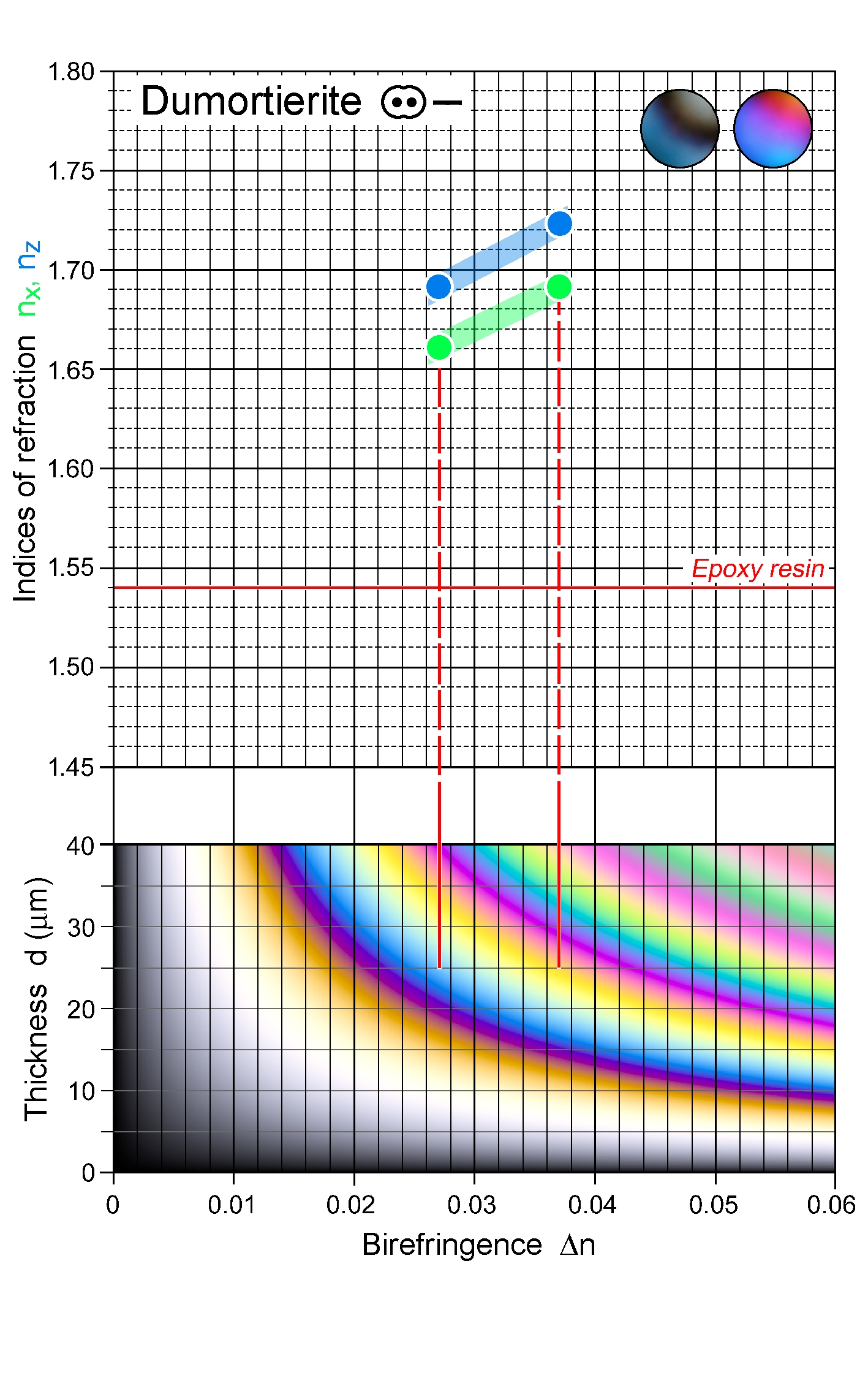|
| Formula | Al27O6(BO3)4(SiO4)12(OH)3 |
| | Optic class & sign | Biaxial negative |
| | Optical orientation | X = c, Y = b, Z = a |
| | Optical plane | (010) |
| | Relief | High |
| | Refractive indices | nx = 1.659 -1.686
|
|
ny = 1.684 -1.722
|
|
nz = 1.686 -1.723
|
|
| n increases with increasing Fe3+ or Ti substituting for Al |
| | Birefringence (max.) | 0.027 - 0.037 |
| | | Δn increases with increasing Fe3+ or Ti substituting for Al |
| | Optic Angle
| 2Vx
= 13 - 55° |
| | 2Vz
|
| | Sign of elongation | Length-fast, l(-) |
| | Interference figure | Sections orthogonal to c yield centred acute bisectrix figures; few isochrons, strong optic axis dispersion |
| | Colour / pleochroism | Distinctly coloured and strongly pleochroic; pleochroism X>Y≥Z
|
| | Zoning | |
|
|
| Form | Habit | Bladed, acicular, fibrous, felty; hexagonal cross-sections if twinned |
| | | Surface | Euhedral to anhedral |
| | Cleavage | {100} |
| | Twinning | {110} cyclic: hexagonal columnar crystals with 6 segments (trillings) |
| | Extinction | Straight to traces of prism faces and cleavage in prismatic sections |
|
|
| Reaction textures | Transformation to mullite at high temperature |
| | Alteration / decomposition | White mica |
|
|
| Occurence | Ign | Granitic pegmatites and aplites |
| | | Met | Medium- to high-grade gneisses, quartzite, Al-rich pelitic schists |
| | | Sed | Heavy mineral in sediments (rare) |
| | | Hyd | Quartz veins; hydrothermally altered quartzo-feldspathic rocks |
| | | Other | |
|
|
| Distinctive properties | High relief, blue colour and strong pleochroism, straight extinction, l(-) |
| | Additional comments | The stoichiometric formula of Nesse (2013) has been adopted here. The common formula provided is (Al,Fe3+)7O3(BO)3(SiO4)3 |
|
|

 Images
Images 


 Images
Images 
